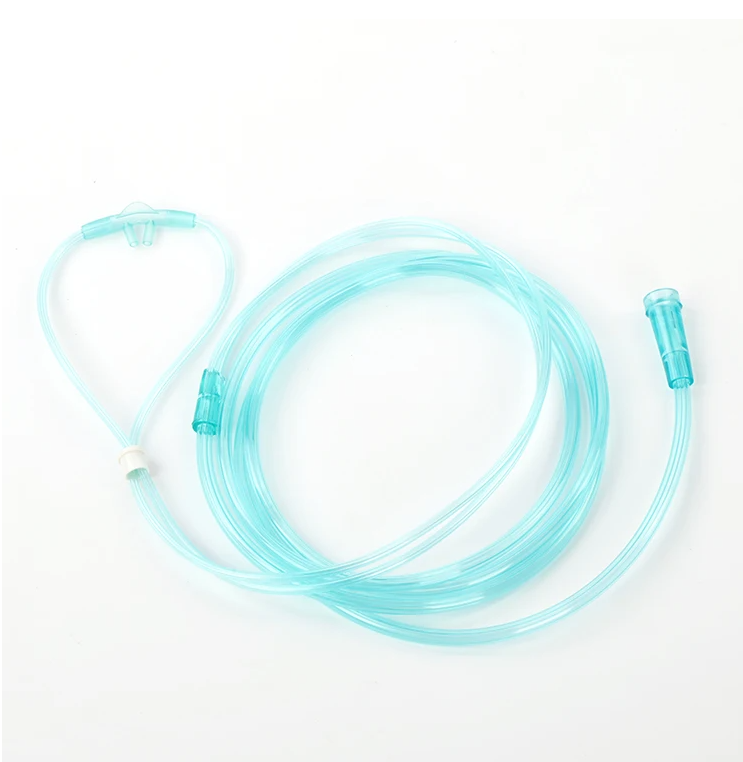Breathe Easy: Demystifying the Nasal Oxygen Cannula
Gasping for air? Don't worry, it's not the plot of a sci-fi thriller (hopefully!). But experiencing breathlessness can be genuinely disconcerting, especially when your body struggles to get enough oxygen. Thankfully, modern medicine has some nifty tools in its arsenal, and the nasal oxygen cannula is one of them.
Imagine two thin, flexible tubes gently resting in your nostrils, delivering a gentle flow of pure, life-giving oxygen. That's the beauty of the nasal cannula - a simple yet effective device that can make a world of difference for anyone struggling to breathe.
The Oxygen Lifeline: When and Why You Might Need a Cannula
So, when does this little breathing buddy come into play? The answer is varied, but here are some common scenarios:
- Chronic respiratory conditions: Think COPD, asthma, or pulmonary fibrosis. These conditions can make it difficult for your lungs to get enough oxygen on their own, and a cannula provides the extra boost your body needs.
- Recuperating from surgery or illness: Major surgeries or illnesses can temporarily weaken your lungs, requiring temporary oxygen support until you regain your strength.
- High altitude travel: Ever felt out of breath on a mountaintop? That's because the air thins out at higher altitudes, and a cannula can help compensate for the reduced oxygen availability.
- Pain management: Sometimes, certain medications like opioids can suppress breathing, and a cannula can ensure your oxygen levels stay optimal.
Beyond the Basics: Exploring Different Cannula Types
Not all cannulas are created equal! These little lifesavers come in various types, each tailored to specific needs:
- Standard Nasal Cannula: The most common, with two thin tubes gently resting in your nostrils and secured behind your ears.
- High-Flow Cannula: Delivers higher oxygen flow rates for individuals requiring more support.
- Tracheostomy Cannula: For those with tracheostomies (breathing tubes directly inserted into the trachea), these cannulas deliver oxygen directly through the opening.
- Humedified Cannula: For long-term users experiencing dryness or irritation, these cannulas humidify the oxygen to prevent discomfort.
Cannula Life 101: Using Your Breathing Buddy Like a Pro
If you're prescribed a nasal cannula, here are some tips for smooth sailing:
- Placement: Adjust the tubes gently so they sit comfortably in your nostrils without blocking airflow.
- Flow rate: Follow your doctor's instructions on the optimal flow rate for your needs.
- Cleaning: Regularly clean the tubes with mild soap and water to prevent bacterial growth.
- Moisturizing: If you experience dryness, use saline drops or consider a humidifier.
- Listen to your body: Pay attention to how you feel, and if you experience any discomfort or breathing difficulties, consult your doctor immediately.
Remember, the nasal oxygen cannula is a tool, not a crutch. With proper use and guidance from your healthcare provider, you can live a full and active life even with the cannula in tow. Think of it as your personal pocket-sized oxygen oasis, always there to lend a breath of fresh air (literally!).
FAQ:
Q: Can I exercise with a nasal cannula?
A: Absolutely! In fact, gentle exercise can actually improve your breathing. Just talk to your doctor about suitable exercises and adjust your oxygen flow rate as needed. Remember, listen to your body and don't push yourself too hard.
So, breathe easy, friends! The nasal oxygen cannula may seem intimidating at first, but with understanding and proper use, it can become your reliable partner in breathing freely and living life to the fullest.
Post time: Dec-26-2023






